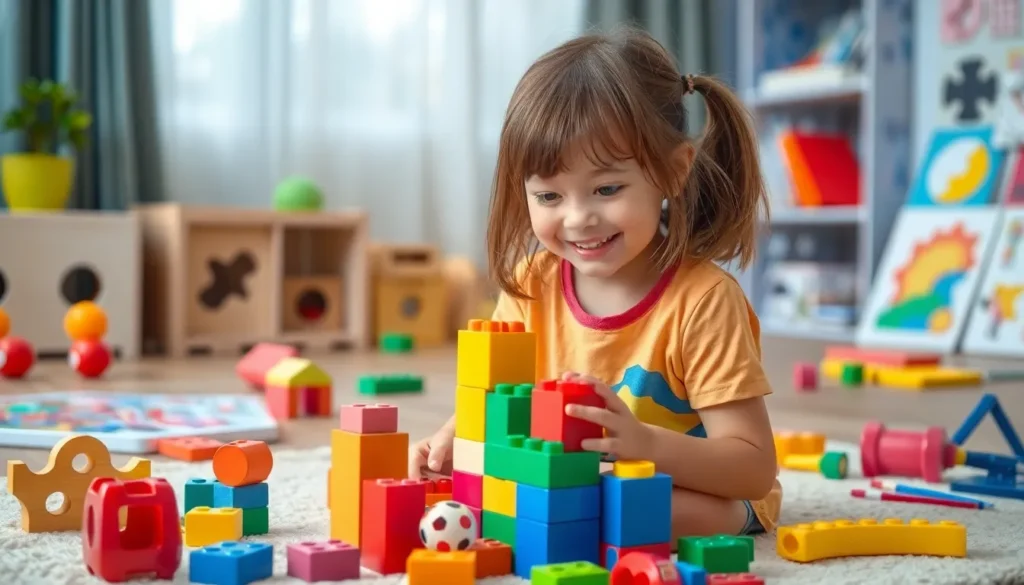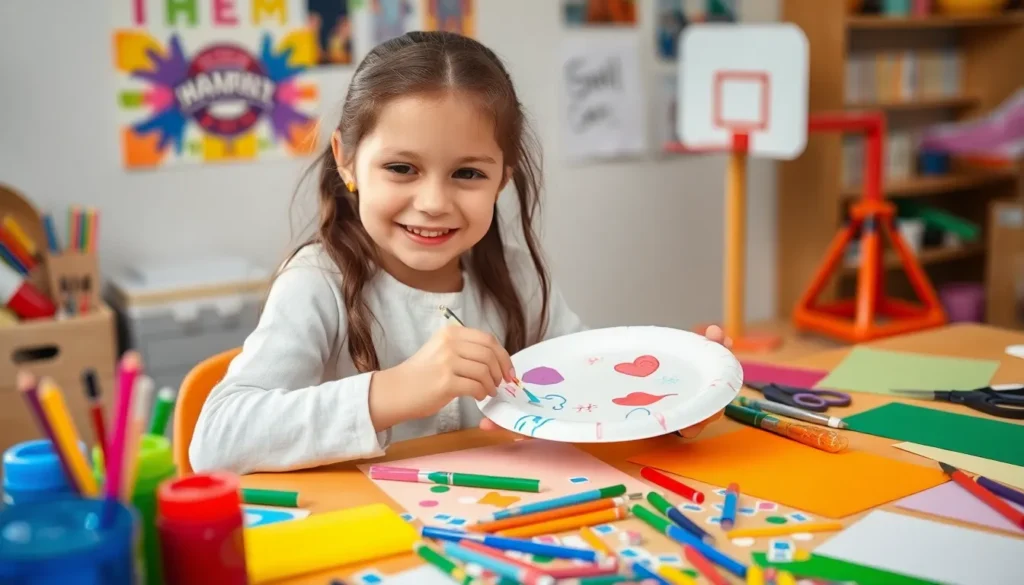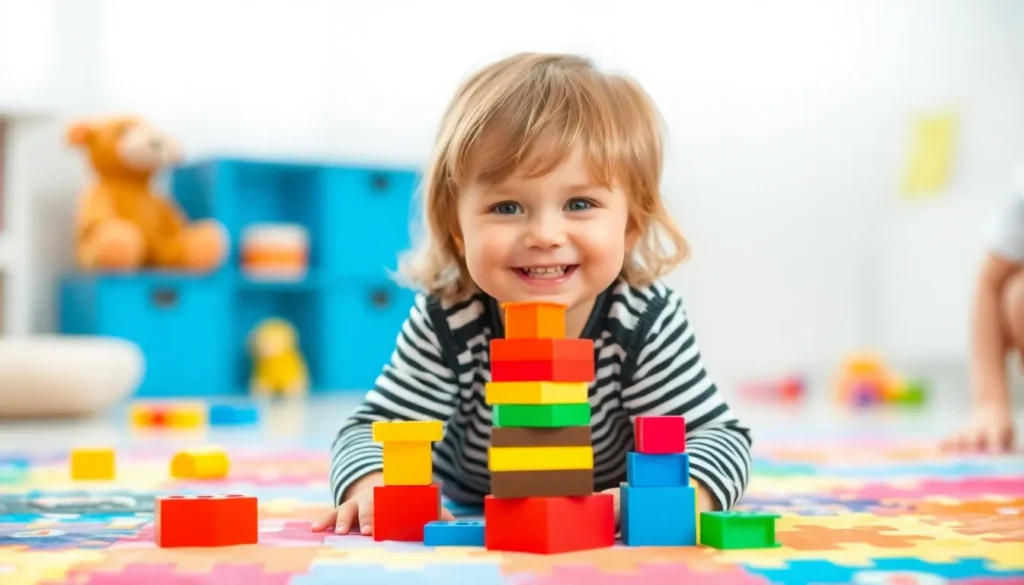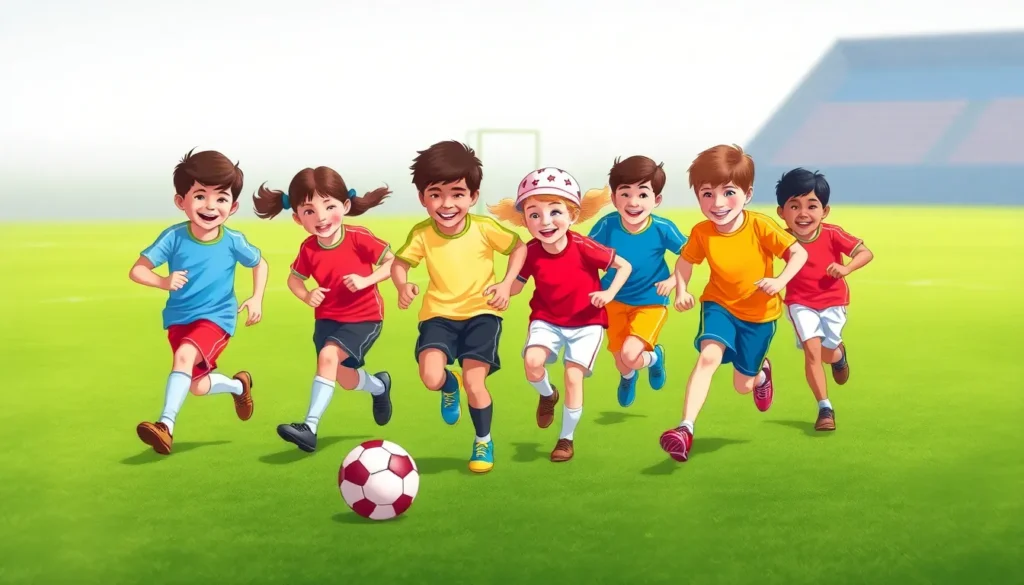Choosing the right sport for kids can feel like trying to find a needle in a haystack—if that needle were a soccer ball and the haystack were a mountain of options. With so many sports available, it’s easy to get overwhelmed. But fear not! This guide is here to help parents navigate the playful world of youth sports, ensuring their little ones find the perfect match for their budding athleticism.
Table of Contents
ToggleImportance Of Sports For Kids
Engaging in sports provides significant advantages for children. Physical activity enhances various aspects of development.
Physical Benefits
Participation in sports improves cardiovascular health. Strengthening muscles and increasing endurance occur through regular practice. Coordination and flexibility also develop, contributing to a child’s overall fitness. Regular engagement reduces the chance of obesity and other health-related issues. The Centers for Disease Control and Prevention (CDC) emphasizes that children should have at least 60 minutes of physical activity each day. Children benefiting from sports enjoy improved motor skills and greater agility, leading to better performance in daily activities.
Mental Benefits
Sports foster essential life skills, including teamwork and communication. Confidence builds as children achieve personal goals, enhancing self-esteem. Improved focus and discipline emerge, helping kids in academic settings. Stress relief occurs through physical activity, which contributes to better mental health. According to the American Academy of Pediatrics, involvement in sports can positively influence a child’s emotional well-being. Critical thinking and strategic planning improve, not only benefiting them in sports but also in other areas of life.
Popular Team Sports
Team sports provide children with opportunities to build friendships, learn cooperation, and enhance physical skills. Many popular team sports engage kids in active play while nurturing their social development.
Soccer
Soccer ranks as one of the most globally recognized team sports. Players learn ball handling, strategic thinking, and teamwork on the field. Games typically involve two teams of eleven players, with the main objective to score goals. Engaging in soccer improves endurance, coordination, and cardiovascular health. Soccer’s low barrier to entry makes it accessible; all that’s needed is a ball and a field. Participation also includes learning respect for opponents and officials. Developing skills in soccer encourages children to appreciate sportsmanship.
Basketball
Basketball stands out for its fast-paced action and teamwork opportunities. Played generally with two teams consisting of five players, it emphasizes agility and strategic planning. Children improve their hand-eye coordination and physical fitness through dribbling and shooting practice. Sportsmanship and teamwork shine as players work together to achieve a common goal. Many schools and local organizations offer basketball leagues, making this sport readily available. Joining a basketball team fosters a sense of community and encourages lifelong friendships.
Baseball
Baseball captivates children with its blend of individual skill and team strategy. Two teams, usually made up of nine players each, face off with one batting and the other fielding. Skills like throwing, catching, and hitting develop through practice and game participation. Parents often appreciate baseball for its relaxed pace, allowing kids to enjoy the game at their own speed. Seasoned coaches teach players about strategy and teamwork, crucial for success on the field. Playing baseball can also ignite a passion for the sport that lasts a lifetime.
Individual Sports
Individual sports provide kids with opportunities to develop personal skills while engaging in physical activities. These sports can enhance confidence and foster discipline.
Swimming
Swimming offers numerous benefits for kids, including cardiovascular fitness and full-body strength. It teaches water safety, a crucial life skill. Children can compete individually in various events, like freestyle and backstroke, or simply enjoy swimming for leisure. Swimmers often experience improved flexibility and respiratory health. Many find the rhythm of swimming calming, which can reduce stress and anxiety.
Gymnastics
Gymnastics is a sport that combines strength, flexibility, and balance. Children learn various skills, such as tumbling and routine execution, enhancing coordination. Individual performances allow kids to express creativity, developing both physical capabilities and self-discipline. Gymnastics also promotes body awareness and encourages a healthy lifestyle from a young age. Participation can lead to increased self-esteem as kids master new skills.
Tennis
Tennis engages kids in both physical exercise and strategic thinking. Players develop agility, hand-eye coordination, and stamina through matches. Singles allow for personal competition, while doubles can encourage teamwork. Kids learn to set goals, focusing on improving their game with practice. Tennis also teaches sportsmanship; players respect opponents and understand the importance of fair play.
Alternative Sports Options
Exploring alternative sports can enrich children’s athletic experiences. These activities diversify interests and foster different skill sets.
Martial Arts
Martial arts provide children with discipline and self-defense skills. Programs like karate and taekwondo emphasize respect, focus, and personal growth. Practicing forms and techniques builds strength and flexibility. In addition, martial arts encourage self-confidence through achieving belt levels. It also promotes mental focus and respect for others, essential for personal development. Classes often include sparring, which enhances social skills and teaches conflict resolution. Many organizations offer tailored programs for various age groups, ensuring all children can participate and thrive.
Dance
Dance introduces children to creativity while improving physical fitness. Styles such as ballet, hip-hop, and jazz foster rhythm and coordination. Through dance, kids enhance flexibility and strength, making it a well-rounded activity. Classes often nurture teamwork as students collaborate on performances. Plus, dance encourages self-expression, enabling children to convey emotions through movement. Many dance studios participate in competitions, which can motivate children and boost their confidence. This engaging art form supports comprehensive development while allowing children to explore their passions.
Choosing the right sport for a child can be a rewarding journey that nurtures their physical and mental development. By exploring various options parents can find the perfect match that aligns with their child’s interests and strengths.
Whether it’s the camaraderie of team sports or the personal growth found in individual activities each choice offers unique benefits. Encouraging children to participate in sports not only promotes health but also fosters essential life skills like teamwork and discipline.
Ultimately the goal is to help kids discover their passions while enjoying the numerous advantages that sports bring to their lives.









